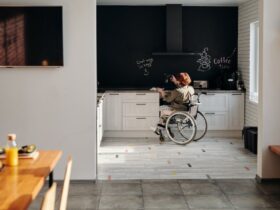In many homes, the coffee table serves as the centerpiece of the living room—a functional and aesthetic staple. Yet, as our living spaces evolve, it’s worth asking: Do you really need a coffee table? This seemingly simple question can impact not only your interior design but also your daily living habits. In this article, we will delve into the various roles a coffee table plays, discuss alternatives, and consider scenarios where it might not be a necessity. Our goal is to help you make an informed decision that best suits your lifestyle, space, and personal preferences.
Do You Need A Coffee Table?
The need for a coffee table largely depends on your lifestyle and the layout of your living space. If you often entertain guests or like to have a central area for snacks and drinks, a coffee table could be useful. However, if you’re limited on space or have young kids, alternatives like ottomans or nested tables might be more practical. Evaluate your specific needs before making a decision.
The Functions Of A Coffee Table
The coffee table serves multiple functions in a home, acting as much more than just a place to set your morning cup of coffee. Here’s a breakdown of some of its key roles:
1. Surface for Items
- Drinks: The primary purpose for many people is to have a convenient place to set down coffee, tea, or other beverages.
- Snacks: It’s also a handy place for snacks during movie nights or social gatherings.
- Remote Controls: The coffee table often ends up being the go-to spot for remote controls, making them easier to find.
2. Aesthetic Appeal
- Design Element: Coffee tables contribute to the overall design aesthetic of a room. They can be chosen to match or contrast with other furniture and decor elements.
- Completing a Living Room Setup: In many home designs, a coffee table serves as the central point around which other furniture is arranged, effectively completing the look of a living room.
3. Storage
- Hidden Compartments: Some modern designs include hidden compartments for additional storage.
- Shelves: Lower shelves or additional levels can hold magazines, books, or decorative items.
4. Social Gathering Point
- Board Games: The surface can be perfect for a game of chess or other tabletop games.
- Conversations: A coffee table can act as a focal point for social interactions, providing a surface around which people can gather.
5. Multipurpose Use
- Work Space: In some homes, the coffee table doubles as a workspace for laptops, sketching, or writing.
- Dining Area: In smaller homes or apartments, the coffee table might serve as an informal dining area.
Considerations Before Purchasing
Before you go ahead and invest in a coffee table, it’s crucial to consider various factors that could influence your purchase. These considerations will help ensure that the table you choose will serve its intended purpose effectively while also fitting into your lifestyle and space. Here are some key considerations:
1. Size Of The Room
Ensure the coffee table will fit comfortably in your living room, considering both its dimensions and its placement relative to other furniture. The table should be proportional to the other furniture pieces, mainly your couch.
2. Usage Patterns
Think about what you will primarily use the coffee table for—will it be for drinks, storage, decorative purposes, or a combination of these? Consider how people move around the space and ensure that the coffee table doesn’t become an obstacle.
3. Budget Constraints
Coffee tables come in various price ranges, from budget-friendly to luxury options. Sometimes spending a bit more initially can save you money in the long run if the table is built to last.
4. Material Preferences
Different materials offer different levels of durability. For example, solid wood is durable but can be costly, while MDF is cheaper but less sturdy. Consider how easy it will be to clean and maintain the material.
5. Style And Decor Compatibility
Make sure the design, color, and material of the coffee table fit with your existing decor.
Whether you’re going for a modern, rustic, or classic look, ensure that the coffee table will not clash with the general theme of your room.
6. Storage Needs
Extra Storage: If you need extra storage, look for a coffee table with shelves or drawers.
Hidden Compartments: For those who prefer a cleaner look, some tables offer secret compartments for remotes or magazines.
7. Family Considerations
If you have pets or young children, you might want to avoid glass tables or tables with sharp edges. Make sure everyone in the household can easily use the table for their needs. By carefully considering these factors, you can make a more informed decision and choose a coffee table that is functional, beautiful, and just right for your living space.
Alternatives To A Traditional Coffee Table
If you find that a traditional coffee table doesn’t quite fit your needs or the constraints of your living space, there are several creative alternatives worth considering. These can offer similar functionalities while catering to specific requirements or aesthetic tastes.
Firstly, ottomans are a versatile option that can serve dual purposes. They can act as a footrest when you’re relaxing on the couch and provide extra seating when you have guests over. Many come with storage compartments for added utility. You can even place a sturdy tray on top to hold drinks or snacks, effectively turning it into a soft coffee table that adds a touch of luxury to your room.
Another popular choice is the use of nested tables. These are smaller tables that can be stored under one another, offering flexibility in terms of surface area and arrangement. You can pull out an individual table when you need extra space for drinks or snacks and then tuck it back when it’s not in use. This is particularly useful in smaller apartments or rooms where space is at a premium.
Trunks or chests can also be a unique and functional alternative to traditional coffee tables. Not only do they provide a rustic or vintage aesthetic, but they also offer ample storage space. This can be particularly useful for those who need to maximize utility in a confined area. The lid can be used as a tabletop for placing drinks or decorative items, making it a practical and stylish choice.
Lastly, consider going unconventional with floor cushions or poufs for a laid-back, bohemian vibe. This works exceptionally well in casual, relaxed settings where formal seating is not a requirement. For those who want to keep the floor mostly clear, wall-mounted drop leaf tables provide a surface when needed but fold up flat against the wall when not in use.
These alternatives can fulfill the functional roles of a coffee table while offering unique aesthetic appeal and versatility, making them worth considering for a variety of living situations.
Conclusion
In conclusion, the need for a coffee table is not universal—it greatly depends on your lifestyle, the size of your living space, and your personal preferences. Whether you opt for a traditional coffee table or explore alternative solutions like ottomans or nested tables, the key is to consider your specific needs and constraints. Remember that the best choice will add both functional value and aesthetic appeal to your home. Take your time, weigh your options, and make an informed decision that enhances your living environment.
FAQ’s
What Are The Standard Dimensions For A Coffee Table?
Standard dimensions for a rectangular coffee table range between 48-60 inches in length and 18-24 inches in width. However, the dimensions should ideally be dictated by the size of your living room and the seating arrangement.
Can A Coffee Table Be Higher Than The Couch?
Typically, a coffee table should be the same height as the seat of the couch or 1-2 inches lower. A table higher than the couch may obstruct the view and flow of the room, and it could be inconvenient to reach.
Is A Round Or Square Coffee Table Better?
The shape of your coffee table should be influenced by the layout of your room and your functional needs. Round tables are generally better for smaller spaces and homes with children (no sharp edges), while square or rectangular tables offer more surface area and fit well with longer couches.
What Can I Use Instead Of A Coffee Table?
Alternatives include ottomans, nested tables, trunks or chests, floor cushions, or wall-mounted drop-leaf tables. These options can offer similar functionalities to a traditional coffee table while catering to specific needs or aesthetic tastes.
How Do I Choose The Material For My Coffee Table?
Consider factors like durability, maintenance, and your home’s existing decor when choosing the material. Wood is versatile and durable, glass offers a sleek modern look but may not be kid-friendly, and metal tables are generally more industrial and sturdy. Choose based on what suits your lifestyle and design preferences.




















Leave a Reply